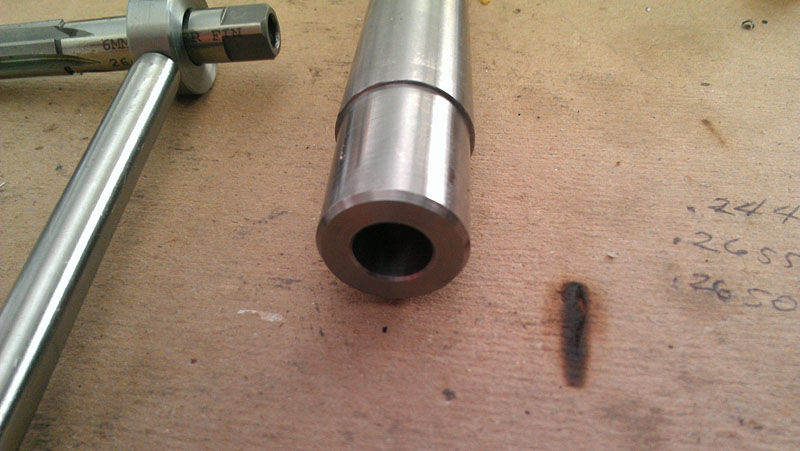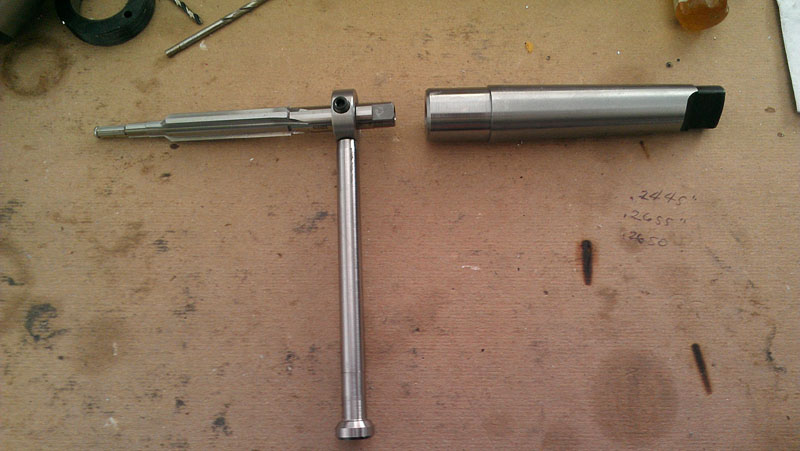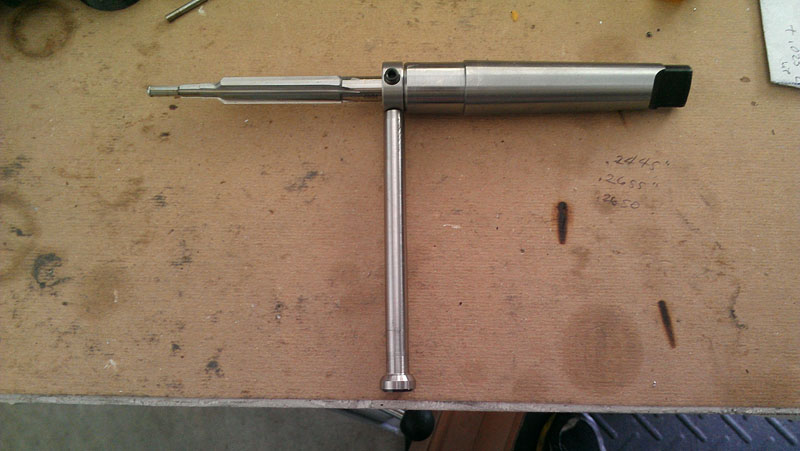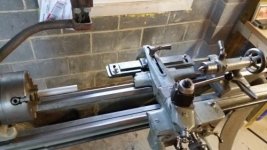you can shim your tailstock to where it needs to be. There is a pretty good Youtube segment by a guy named Halligan who does his. Pretty simple and easy to do.
Pete
Shimming a tailstock only helps if you have one really worn tailstock base. not way wear but tailstock base wear and are turning long parts between centers. As to shimming to get a straight reamer push it might help for a short time but the lathe will eventually change levels, out it goes again.
I have set lathes with a $1.5 million dollar industrial laser on 48" reinforced isolated bases only to check in a few months with the laser and the lathe has moved. Nothing setting on Gods earth ever stays perfectly stationary. We bought this laser to set large steam turbines but used it some setting machine tools. This laser had its own full-time operating crew so it was being used by factory trained experts.
If you are chambering use a floating pusher. They work every time!
As long as the spindle runs smoothly it doesn't hurt to have some play in the spindle shaft for chambering work. That said, if you have rough bearings, something you can easily have with this Chicom stuff, new or used, you might not get the desired finish. Worn spindles that use bushings in something like an old South Bends still run smoothly even though they may be sloppy on a "pry" test.
The only really good bearing spindles for precision work come on something like Hardinges or Monarch 10EE's and those bearings were about $18,000/set in 1995. So don't expect to get that quality spindle bearings in a lathe that only costs $5,000 new for the entire machine!! Remember, the great gunsmith, Seeley Masker, had 3 SB Heavy 10's and his son Jerry sill owns and uses them.
EDIT- using the Mike Bryant style pusher, used by many gunsmiths, is the best design I've seen. Unfortunately Mike has retired and taken down his gunsmith web site.
.







